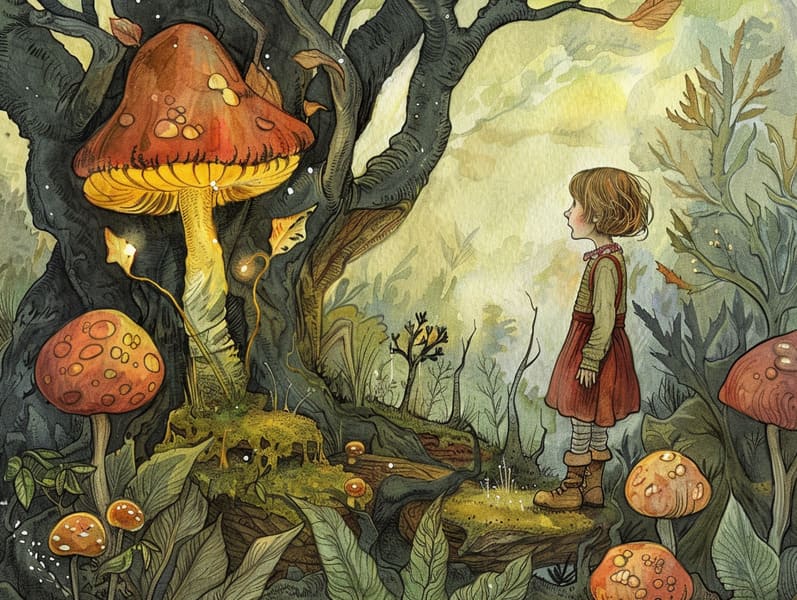
Historical fairy tales have legendary status. These narratives have been shared from one generation to the next millennia before they were ever documented. They developed from a variety of societies, including European traditions. They were initially passed along among elders, often carrying themes and messages related to the societal norms and beliefs of the time.
The renowned Brothers Grimm, Jacob and Wilhelm, were among the first to compile and publish many of these beloved fairy tales. Their compilation, "Grimm's Folk Tales," included classics like "The Little Glass Slipper," "The Story of Hansel and Gretel," and "The True Story of Snow White," which have since become staples in the world of children's fairy tales. Similarly, H. C. Andersen's enchanting stories, such as "The Mermaid's Tale," and "The Story of the Ugly Duckling," have won hearts worldwide, cementing their place in the pantheon of treasured fairy tales.
Despite their ancient origins, these stories remain as applicable as ever, especially as children's night stories. These charming stories are now available in various formats, including artistically illustrated books, whimsical animations, and digital storybooks.
Their unwavering allure can be traced to several enchanting factors:
Moral Lessons: Classic fairy tales often impart important moral lessons. Tales like "The Story of the Boy Who Cried Wolf" teach the value of truthfulness, while "The Tale of the Tortoise and the Hare" illustrate the traits of resolve and unpretentiousness. These stories offer children clear distinctions between good and bad, forming their moral compass in a tender yet profound way.
Empathy and Awareness: Old fairy tales frequently illustrate characters facing trials and tribulations, prompting young listeners to feel with their struggles and celebrate their triumphs. For instance, "The Tale of Beauty and the Beast" illustrates the value of valuing inner qualities to comprehend the true character of a person, encouraging sympathy and appreciation.
Cultural Understanding: Many timeless fairy tales are interwoven with the cultural contexts from which they were born. Learning from these stories can provide informative snapshots into different traditions, promoting a sense of cultural insight and appreciation.
Fantasy and Innovation: The fanciful elements in timeless fairy tales—magical spells—enliven children’s visions. These fairy tales transport readers to fantastical realms, unleashing inventive thinking and a sense of excitement that stays a lifetime.
Old fairy tales are not only whimsical but also didactic. They provide alluring tools in nurturing various intellectual and emotional capacities in young readers. When fairy tales are spoken out loud, they cultivate verbal skills by introducing new linguistic elements and intricate sentence structures. This practice also promotes listening abilities and mindfulness, as kids follow the story, keen to see what happens next.
Furthermore, discussing the themes and characters of timeless fairy tales can enhance reasoning skills and logical thinking. Children learn to see patterns, make predictions, and catch on to cause and effect. These explorations also aid the young communicate their thoughts and feelings, promoting their emotional intelligence.
In today’s digital age, the proliferation of online storybooks has made these stories more accessible than ever. Web platforms and web apps give large libraries of famous website fairy tales that can be browsed or listened to anytime, anywhere. Fairy tales voiced are particularly widespread, making available an fascinating method for children to engage with these entrancing tales. Voice books and read-to-me videos guide characters and settings to life, often enhanced by magical melodies and instrumentals that boost the story journey.
The timeless charm of timeless fairy tales lies in their ability to alter to contemporary times while maintaining their underlying messages. Contemporary revisions of these tales often include more representative figures and modern settings, making them pertinent to today’s audience. However, the essential messages of braveness, humanity, and lawfulness remain unchanged, continuing to move audiences of all ages.
Ancient fairy tales also offer a sense of assurance and knowability. They present a coherent narrative with a transparent beginning, middle, and end, often coming to a close with the resolution of conflicts and the triumph of truth over falsehood. This foreseeability can be relieving for young readers, allowing a sense of invariability in an variable world.
Ancient fairy tales continue to allure and inform new generations, maintaining their delight and pertinence in modern society. As children's bedtime stories, they introduce a perfect blend of wonder and wisdom, boosting moral values, empathy, and creativity. The abundance of online fairy tales and the well-received status of fairy tales spoken confirm that these classic fairy tales remain reachable to new generations.
By maintaining and spreading these fairy tales, we continue to value the rich tapestry of human imagination and cultural heritage. Whether you are enjoying a gorgeously illustrated book, enjoying a digital library, or playing an read-aloud story, the radiance of ancient fairy tales is always within reach. These narratives highlight of the persistent impact of narratives and its ability to gather us across centuries and lands.
No matter if you are perusing a gorgeously illustrated book, seeing a digital collection, or hearing an audio story, the attraction of Grimm's fairy tales is always within reach.
These fairy tales emphasize of the perpetual ability of narratives and its ability to unite us across eras and regions, establishing a link that enchants and educates alike.